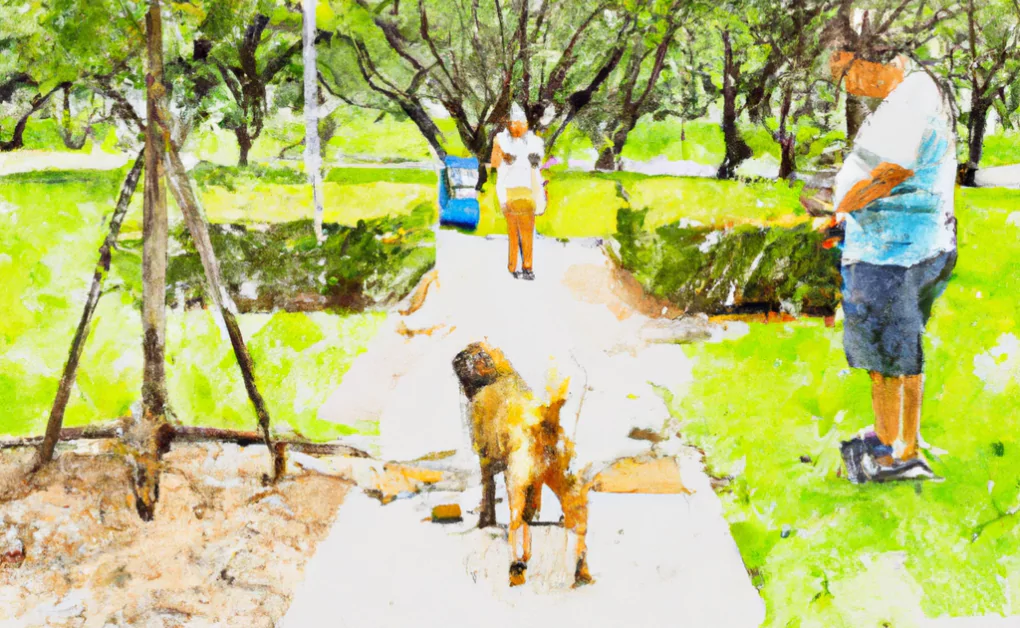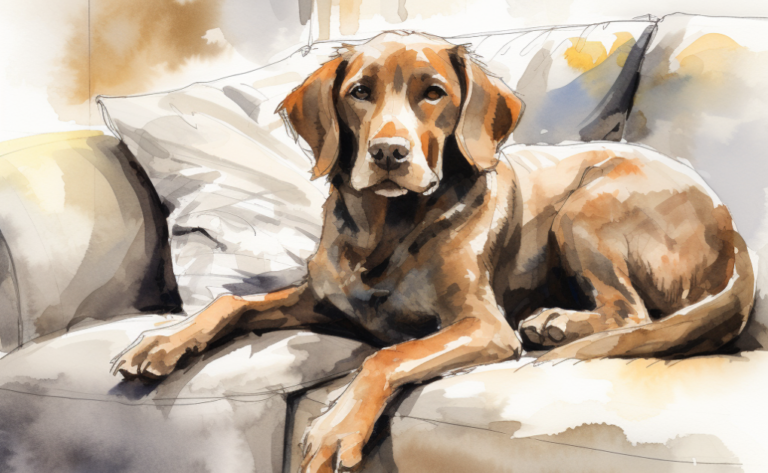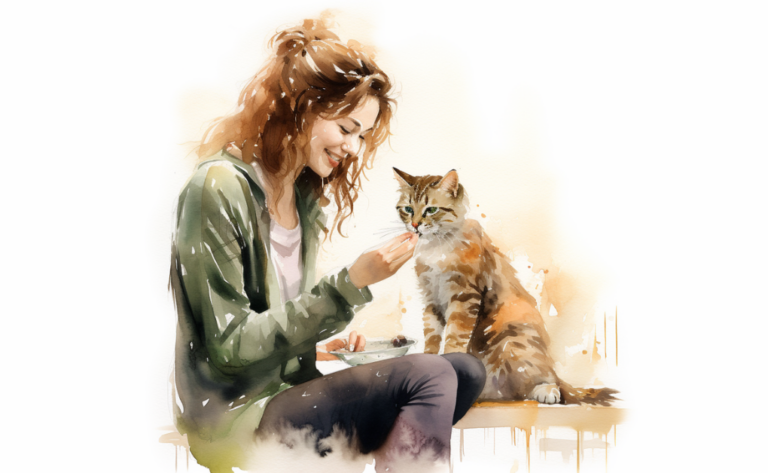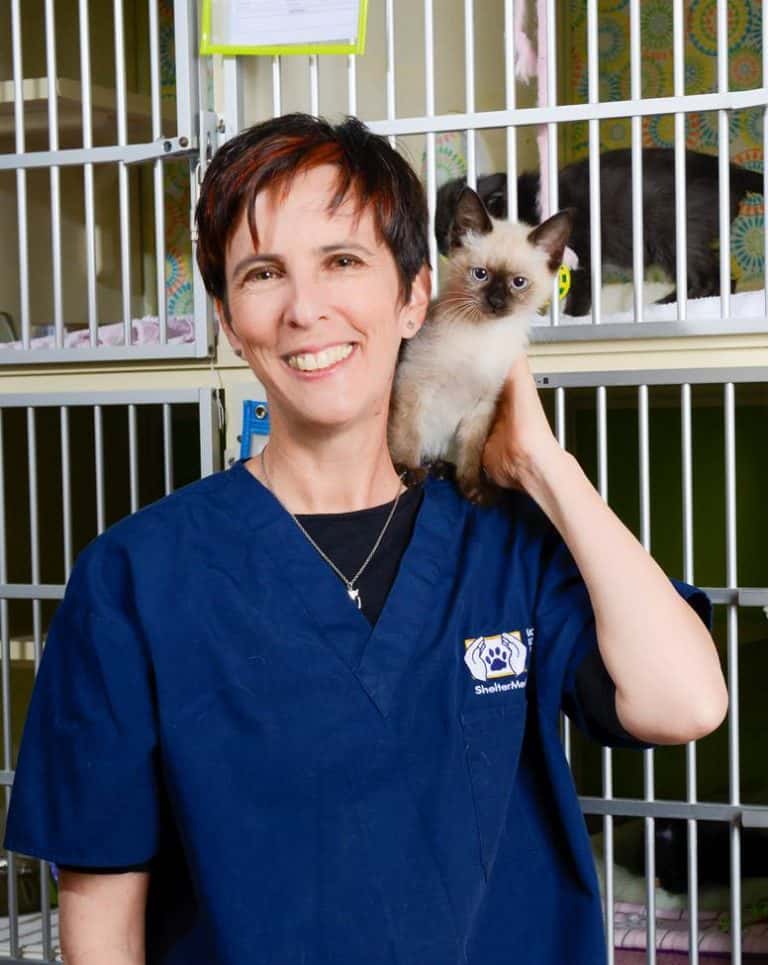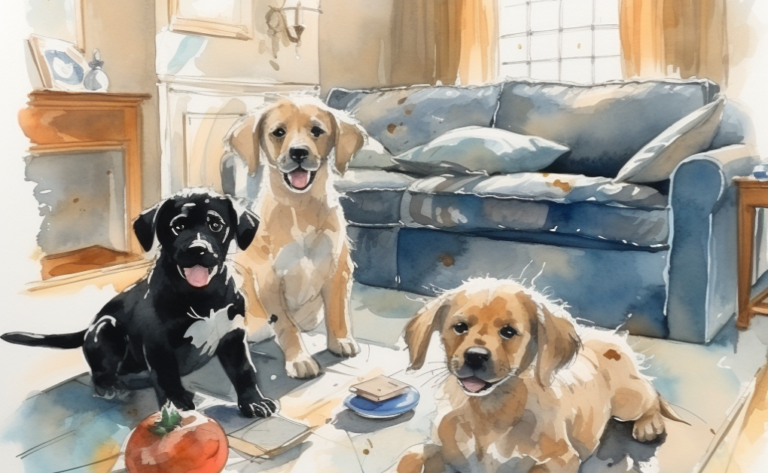A Veterinarian’s Guide To Greeting Dogs in Public
Introduction
Lucy, an enthusiastic dog lover, couldn’t help but feel disheartened by her awkward encounters with dogs in public. No matter how hard she tried, she seemed to struggle with approaching and greeting them without causing unease.
Meeting a new dog can be an exciting experience, but it is essential to remember that not all dogs are comfortable with strangers. The American Kennel Club recommends following certain social etiquette when greeting a dog you don’t know to ensure your and the animal’s safety.
I want you to know that etiquette is essential when greeting dogs in public, especially in dog parks. Here are some tips to help you make sure that your interactions with unfamiliar dogs are safe and enjoyable for everyone involved:
The Proper Way to Greet a Dog in a Public Space
When it comes to greeting a strange dog, politeness is key. It is essential to remember that greeting others impolitely can lead to being avoided by humans and animals. Learning how to greet new dogs politely is vital to creating an enjoyable experience for everyone involved. Understanding proper canine greetings can help ensure the dog and its owner feel safe and welcome.
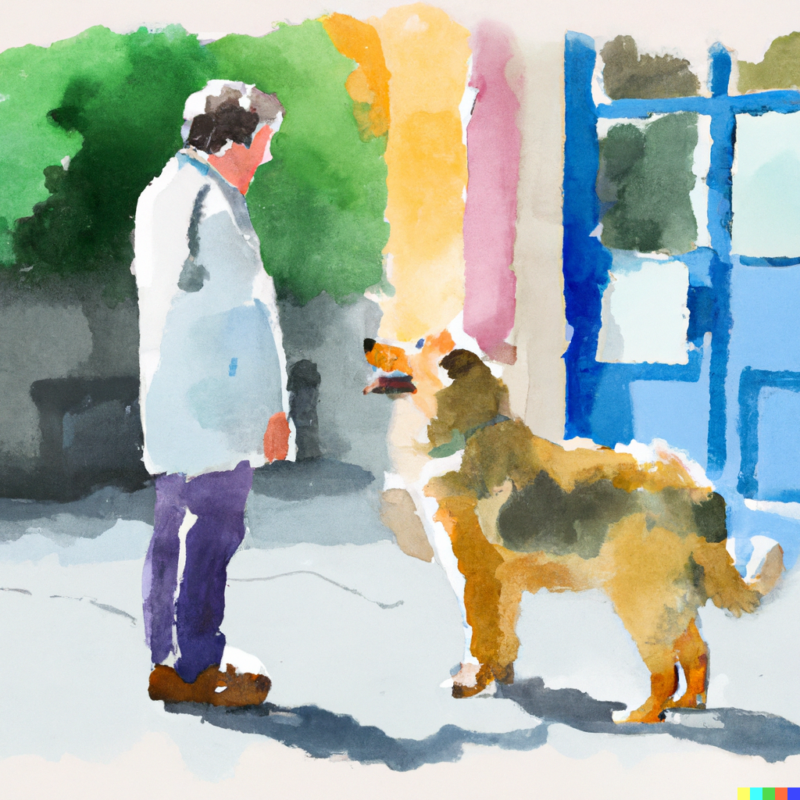
Always Ask Permission
Before encountering any strange dog, please ask the dog owner for permission and ensure they are comfortable with you interacting with their pet. This is especially important if the dog appears to be nervous or aggressive.
Respect the owner’s decision if they say no and let the dog be. Don’t press on after a no, as it could lead to an even more uncomfortable situation for you and the dog. On the other hand, the owner may be working on training their pet or have a sore spot they don’t want touching, so it is best to respect their wishes.
Strangers coming too close to the owner could also cause the dog to become aggressive, so it is essential to always ask permission before approaching a dog, even if it looks friendly. There may be valid reasons why an owner says no, such as the dog is shy or in training, not feeling well, or simply not enjoying interactions with strangers.
Respect the owner’s decision if they say no, and understand that there are many reasons why they may not want you to interact with their pet.
Avoid Making Direct Eye Contact
Avoiding direct eye contact and crouching over the dog is also essential, as this can be seen as threatening behavior. Therefore, you should avoid making direct eye contact when greeting dogs. Instead, try to slightly avert your gaze or direct your eyes at an angle, so they don’t feel like they’re being stared down.
This behavior lets the dog know that by avoiding eye contact, you aren’t a threat and can help create a more relaxed atmosphere for everyone involved. Conversely, making direct eye contact without learning how the dog reacts to new people can create stress and discomfort for you and the animal.
This is especially true if the owner still needs to get the direction of a familiar greeting established with their pet, such as shaking hands or playing fetch.
Speak Slowly and Calmly
When approaching a strange dog and owner, it is essential to move slowly and calmly. Speak in a low, soothing voice and avoid sudden movements or loud noises that could startle the animal. Allow the dog to sniff your hand before attempting to pet dogs, as this will help them become more comfortable with you.
Make yourself appear friendly by turning your body slightly to the side and avoiding head-on approaches. Speak gently and offer your hand for investigation while petting the animal’s shoulder, neck, or chest area. Dogs use their nose to greet people rather than to shake hands, so hold your hand in a fist so the dog can approach and sniff if they choose. Don’t thrust your hand at them, as this may startle them.
It is also important to remember that not all dogs enjoy being petted. Therefore, if the dog appears uncomfortable or pulls away, it is best to respect their wishes and back away slowly.
Greet With Dog-Appropriate Actions
When greeting a dog, it’s essential to be aware of its body language and comfort level. Patting the side, neck, back, or chest is an excellent way to greet a dog appropriately. Reaching over the head or hugging should be avoided, as this can startle the animal.
If you are introducing two dogs, it is best to do so in a safely enclosed area where they can interact without being on a leash. Leashes should remain on for the first few minutes of interaction until it is clear that the dogs will play together nicely. In urban areas, on-leash greetings may be necessary if there isn’t an enclosed space for them to meet.
Give Treats Sparingly
Giving treats sparingly is an excellent tip for greeting dogs in public places. Treats are beloved by your canine, but remember, too many can throw off their dietary balance and make them sick. Giving too many treats can also be a negative reward if you offer them every time the dog jumps on you or behaves poorly.
When meeting a dog in a public setting, please limit yourself to offering a few delicious treats as occasional rewards for the dog’s good behavior when you need them. The goal should be forming a positive relationship with the pup: one based on frequent verbal praise, good behavior rewarded through play, head scratches, and cuddles rather than food rewards.
It is also important to remember that not all dogs enjoy being petted or given treats. If the dog appears uncomfortable or pulls away, it is best to respect their wishes and back away slowly. By following these simple tips, you can ensure that your interactions with strange dogs are safe and enjoyable for you and the animal.
Exercise Caution Around Free-Roaming Dogs
When encountering a loose dog, it is essential to remain calm and non-threatening. Children should practice the Be a Tree technique, which involves standing still with arms crossed and looking away from the dog. Knowing how to greet on-leash dogs safely is also essential for confidently and safely greeting any new dog.
It is best to avoid creating frustrated greeters by not allowing dogs to greet each other on leashes. Instead, allow them to interact safely, enclosed with leashes on for the first few minutes of interaction. Leashes should be removed as soon as it is clear that the dogs will play together nicely.
To keep yourself safe (and ensure that your canine acquaintances remain unscathed,) use common sense practices when interacting with them. It’s also important to remember that you should never pet a strange dog on top of its head. Instead, offer your open palm for them to sniff and get familiar with you before attempting a petting session – this will help to show the canine that you’re a friendly person!
Finally, resist any urge to chase after or corner run-away dogs; these activities only worsen their fear and could cause them to lash out in self-defense. Instead, remain calm and call a professional if needed; they’ll have plenty of experience dealing with frightened doggies!
Common Mistakes Made When Greeting a Strange Dog
When greeting a dog, it is essential to remember that not all dogs love people, even if the person loves dogs. Failing to observe proper etiquette when greeting a dog can have dangerous consequences and lead to being avoided by the animal.
Greeting others impolitely can be seen as rude and disrespectful, so it is essential to take the time to learn how to interact appropriately with animals to create positive experiences for everyone involved. These steps will help ensure that you and your furry friend have an enjoyable meeting experience.
1. Entering a Dog’s Comfort Zone
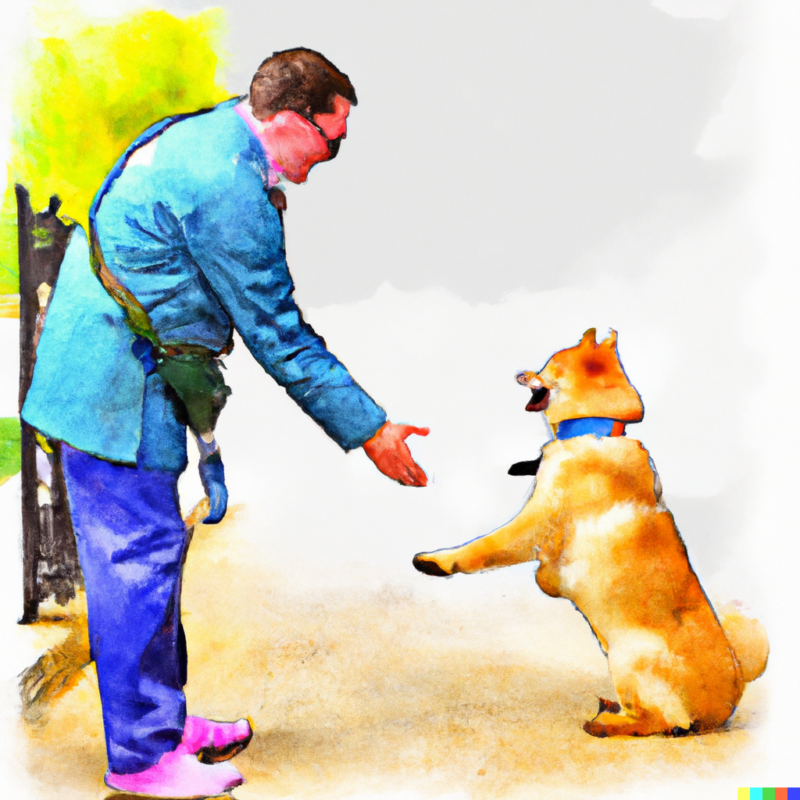
Reaching into a dog’s safety zone can be dangerous and potentially harmful. Dogs may bite to protect their space and belongings, so it is essential to give them the respect they deserve by not invading their personal space. When encountering a loose dog, it is necessary to keep body language calm and non-threatening.
Children should use the Be a Tree technique when encountering a loose dog: standing still with arms tucked into sides and hands folded in front of them while looking down. This will help the dog understand that the child is not a threat and will help prevent any potential harm.
Practicing the Be a Tree technique with friendly dogs until it comes naturally to children is also essential. This will help ensure they are prepared for unexpected encounters with unfamiliar dogs. Additionally, dogs should be given their space when confined in cars, behind fences, and inside crates and not disturbed unnecessarily. We can ensure that humans and dogs remain safe by following these simple steps.
2. Running Toward a Dog
Approaching an unfamiliar dog can be daunting, but it doesn’t have to be. It is important to remember that rushing up to a dog can be perceived as scary and may undo any training the owner has done. The best way to approach a dog is at a relaxed walking pace, in an arcing motion. To close a dog safely, slowly kneel and turn your shoulder away from them while avoiding direct eye contact. Staring and approaching a dog head-on is very threatening for most dogs and should be avoided.
Glaring at an unfamiliar dog is thought to be impolite and could be seen as a challenging gesture. Instead, approach dogs slowly in an arc, get on their level, and let them come to you. This will help make the interaction more comfortable for you and the animal. If the dog seems scared or uncomfortable, you can back off slowly until they are more relaxed before continuing your approach. These steps will ensure a safe and enjoyable experience when meeting new dogs.
3. Approaching a Dog Without the Owner’s Permission
You can only greet a dog after asking the owner first. But, first, we must understand it’s only possible or appropriate to ask an owner for permission before approaching their pet.
Always ask the owner before greeting an unfamiliar dog. Respecting the owner and their pet will be appreciated, so it is best to ask for permission before approaching. Avoid direct eye contact and crouching over the dog; instead, keep your body relaxed and turn away to signal that you are not a threat. Speak in a calm, reassuring tone when approaching a strange dog.
Once you have been permitted to greet the dog, offer your hand for investigation and gently pet the shoulder, neck, or chest. Please take care of the dog’s wishes and stop if it backs away at any time. It is important to remember that each animal may react differently to strangers, so take your cues from their behavior and proceed with caution. You can create a positive experience for yourself and the pet with patience and understanding!
4. Staring and Approaching a Dog Head On
Staring and approaching a dog head-on is not recommended, as it can be very intimidating. This behavior can be seen as a malicious threat and should be avoided. Instead, approach dogs slowly in an arc, get on their level, and let them come to you. It is important to remember that looming over a dog and patting its head is not recommended either, as it can be scary for the dog.
To make the animal feel more comfortable, squat or kneel with your side facing the dog. Taking photos of pets or children from their level is also a great way to capture beautiful shots without making them uncomfortable.
It is important to remember that dogs are sensitive creatures and must be treated respectfully. Staring and approaching a dog head-on can cause fear in the animal, which could lead to aggression or other negative behaviors. By taking the time to approach slowly in an arc, getting on their level, and letting them come to you instead of approaching head-on, you can create a positive experience for yourself and the pet.
5. Looming Over a Dog and Patting on the Head
It is important to remember that looming over a dog can be intimidating and scary for them. Dogs are susceptible to body language and can easily pick up on the fact that you are looming over them. This can cause them to feel threatened or scared, which is not the desired outcome when interacting with a pet. Instead, you can get down on the dog’s level by squatting or kneeling next to them. This will help make them feel more comfortable and relaxed around you.
Respect Canine Customs
Dogs have their language and customs when it comes to meeting strangers. Respecting these preferences when interacting with dogs is essential, as they are not expected to abide by our cultural norms when interacting with other species. When approaching a dog in public, it is necessary to ask permission first, and this can be done by making eye contact with the owner and waiting for them to give the okay before proceeding.
When approaching the dog, do so slowly and in an arc, kneeling and offering the side of your body. Allow the dog to come to you before attempting any physical contact; if they lean into it, you may gently pet them.
It is also important to remember that dogs may become scared or defensive if approached too quickly or without permission from their owners. Suppose a dog appears uncomfortable or shows signs of fear or aggression; back away slowly and give them space until they calm down. Respect canine customs by knowing how your actions affect them; this will help ensure everyone has a positive experience.
Passing the Sniff Test
When interacting with dogs, it is essential to remember that they have their language and body language. So, please respect a dog’s body language when greeting the m, and keep your emotions in check.
Passing the sniff test is the key to getting on a dog’s good side. Dogs use their noses to explore the world around them, so make sure you’re letting your scent do the talking!
The best way to become acquainted with a pup is to ask its owner for permission, then hold your hand for the dog to sniff. Then, if a dog is interested in you and feels safe, it will gladly take a whiff and may even lick your palm—the ultimate compliment!
Dogs can sense fear, anger, and other strong emotions, so it is best to remain calm and relaxed when approaching them.
Be Mindful of Your Voice
Dogs are susceptible to sound and can easily pick up on the tone of your voice. Therefore, when greeting a dog, it is essential to use a low, soothing voice. Speak calmly and gently, and avoid using loud or aggressive tones. This will help the dog feel more comfortable around you and create a positive experience. This trust allows them to enjoy each other’s company without any fear or anxiety on either side.
Frequently Asked Questions
Disclaimer: The information provided on this veterinary website is intended for general educational purposes only and should not be considered as a substitute for professional veterinary advice, diagnosis, or treatment. Always consult a licensed veterinarian for any concerns or questions regarding the health and well-being of your pet. This website does not claim to cover every possible situation or provide exhaustive knowledge on the subjects presented. The owners and contributors of this website are not responsible for any harm or loss that may result from the use or misuse of the information provided herein.

